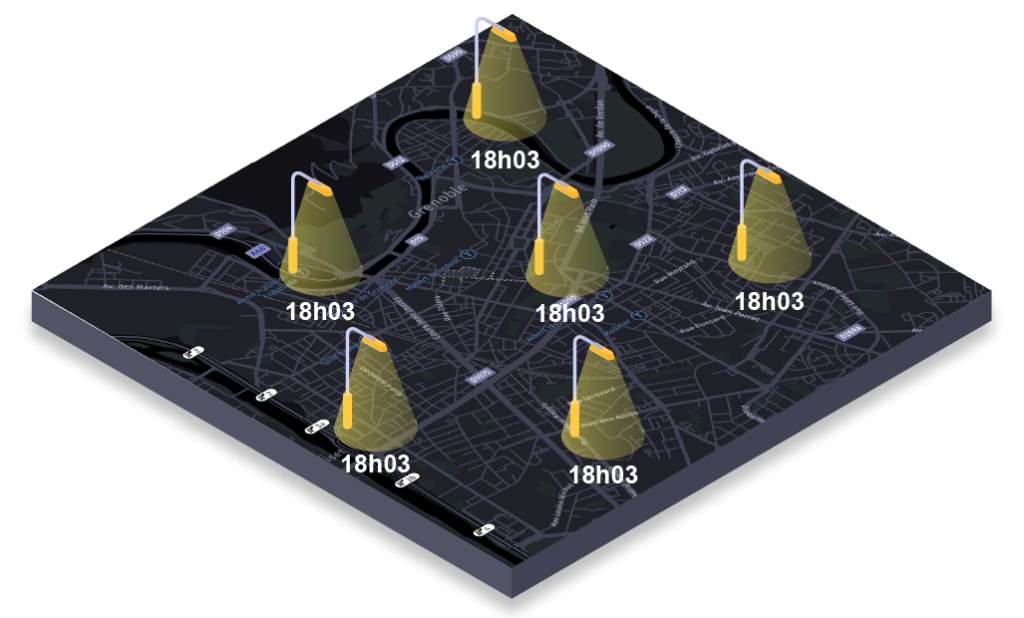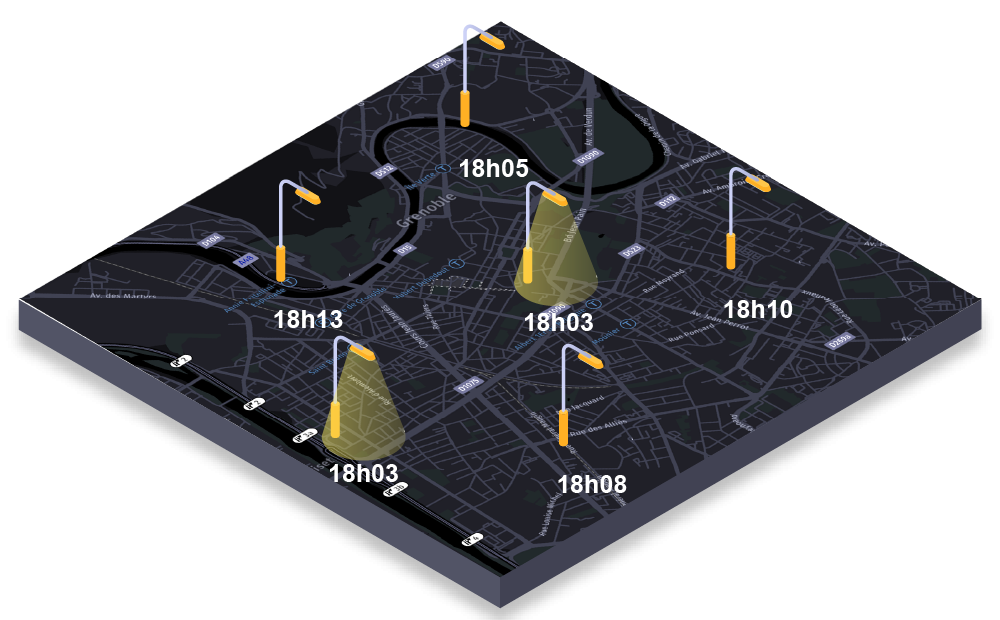Radio time synchronisation, a major advantage for modern public lighting
Radio time synchronisation, a major advantage for modern public lighting
In a world where every minute counts, radio time synchronisation is a key solution for ensuring a precise public lighting, consistent and economical.
This technology enables all clocks in a lighting network to remain perfectly aligned with a reliable time reference, without drift or deviation.
In practical terms, radio synchronisation devices update their time every minute, thereby ensuring synchronised switching on and off throughout the city. Whether in a large urban area or a rural village, every light follows the same rhythm.
Why is radio time synchronisation essential?
The absence of radio time synchronisation may seem insignificant, but it has a real impact on energy consumption. Clocks that are not radio-synchronised, exposed to temperature variations and external conditions, naturally drift over time.
This deviation can reach up to 30 minutes per year, resulting in premature switching on or delayed switching off, which amounts to several hundred hours of unnecessary lighting over a full year.
Thanks to radio time synchronisation, this drift disappears completely. Switching remains accurate day after day, season after season.
Result: up to 300 hours of energy savings per year, simply by managing time effectively.


Example of public lighting with radio synchronisation.
Public lighting switches on everywhere at the same time. Switching does not drift over time. The absence of radio synchronisation is a factor that significantly increases switch-on time.
Example of public lighting without radio synchronisation.
All non-radio-synchronised clocks installed outdoors drift significantly due to temperature variations. It is common to see drifts of 30 minutes per year!

Example of public lighting with radio synchronisation.
Public lighting switches on everywhere at the same time. Switching does not drift over time. The absence of radio synchronisation is a factor that significantly increases switch-on time.

Example of public lighting without radio synchronisation.
All non-radio-synchronised clocks installed outdoors drift significantly due to temperature variations. It is common to see drifts of 30 minutes per year!
How does it work for public lighting?
Le principe est simple mais redoutablement efficace. Une antenne de réception capte un signal horaire émis par une station radio nationale (souvent le signal DCF77 ou GPS), puis le transmet à l’horloge du système d’éclairage public.
This radio time synchronisation guarantees an automatic and continuous updating, even in the event of a power cut or temperature variation.
Therefore, the time is always accurate, without manual intervention, and the switch-on/switch-off cycles remain consistent across the entire network. It is a reliable, autonomous and sustainable solution, particularly suited to local authorities seeking to optimise their infrastructure.
One of the pillars of a smart city
In line with the logic of smart cities, radio time synchronisation integrates seamlessly into comprehensive, connected public lighting management.
Combined with systems of remote management or light intensity variationIt optimises switch-on times according to actual needs, while maintaining perfect temporal consistency.
A radio-synchronised clock then becomes a reliable anchor point for all connected equipment in the city: display panels, electrical terminals, traffic sensors, etc.
Time accuracy is becoming an essential component of urban performance.


